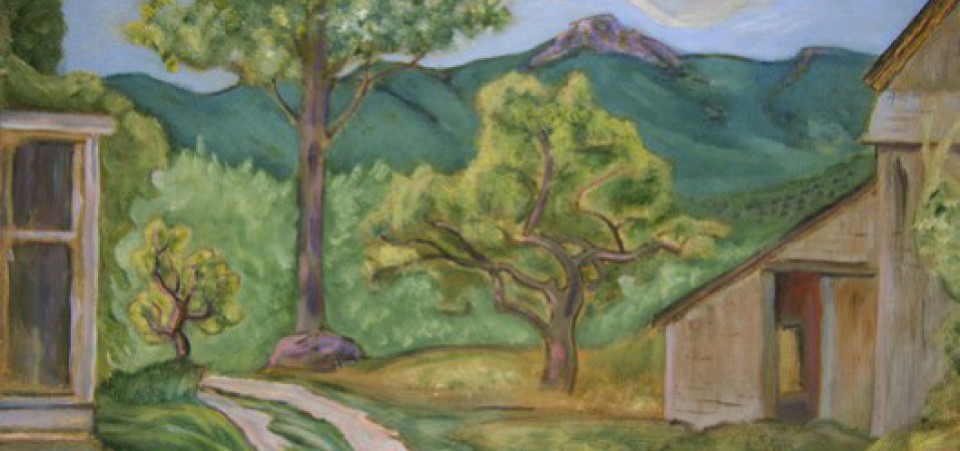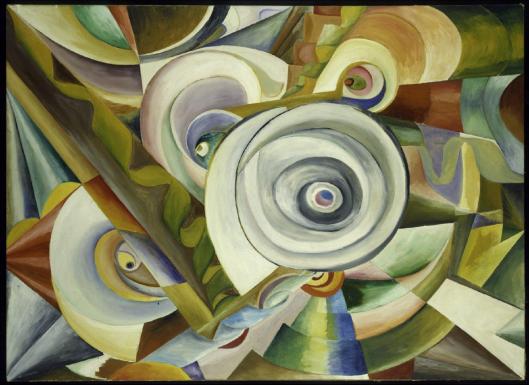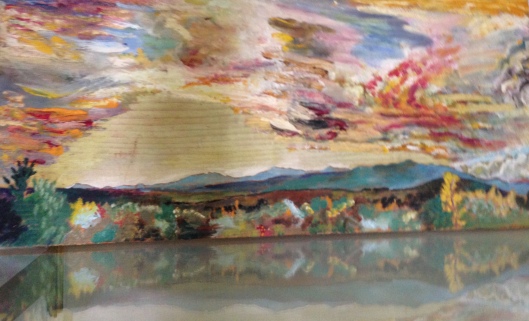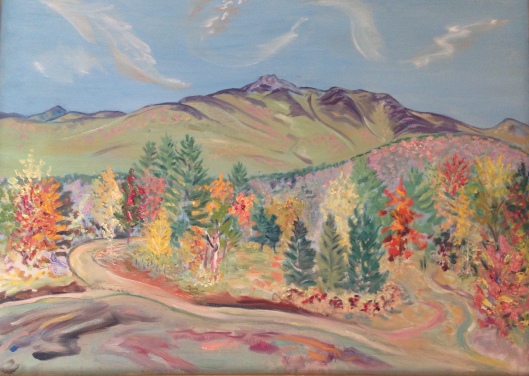Tags
“A poet is somebody who feels, and who expresses his feeling through words.
This may sound easy. It isn’t.”
Many people do not know that E E Cummings’, the well-known poet who lived part of the year near Silver Lake, in Madison, NH, first ambition was to become a painter, not a poet. Born on October 14, 1894, most people know E.E. Cummings the writer. As a poet, Edward Estlin Cummings was very popular throughout the 20th century and received widespread critical acclaim. Less well-known is Cummings’ accomplishment as a visual artist.
Born to a pair of genteel Cambridge parents, Estlin’s parents (he preferred being called this) were anxious that he have the best education and environment he possibly could to be a successful and happy man. Schooled at home nearly until he enrolled in Harvard at sixteen, his parents were willing participants in enacting plays, costumed, with great drama. Many of the drama props are on view at the Madison Historical Society.
Cummings thought endlessly about visual art and its relation to the other arts. He devoted a tremendous amount of time to his art, writing copious notes on his ideas about painting, color theory, the human body, the ‘intelligence’ of painting, and the Masters. He spent several years in Europe and studied all forms of art in museums.
His father was a minister of the Unitarian Church and a teacher at Harvard, where Estlin always had access to the best educators of the times. Estlin himself never became a devout churchgoer, but more of a transcendentalist in the tradition of Ralph Waldo Emerson, who constantly apprehended spiritual truth through intellect, nature, and reading. His numerous studies of Mount Chocorua, while in the tradition of Cezanne, suggest an endless search for the truth—that of the ultimate ‘eyeball’—seeing and understanding all—which Emerson referred to in his essays.
At an early age he showed promise as a writer and an illustrator, creating his own storybooks that he also illustrated. These “ twin obsessions”—painting and poetry—were the focus of his life, but by the 1930s, he was recognized most for his poetry.
There were four major aesthetic concerns of Cummings’ adult work: perception, three-dimensional form, motion, and the interrelation of the arts were his focus in the early part of his life. Expert biographer Milton Cohen characterizes him as a ‘poet, cerebral aesthetician, and lifelong painter.’ Cummings was always struggling to earn a living, and owes much to a group of wealthy supporters who were happy to commission him to paint.
Cummings painted primarily in oils on canvas, canvas board, particleboard, cardboard, and sometimes burlap. His painting is generally divided into two phases. Between 1915 and 1928, he produced large-scale abstractions that were widely acclaimed.
Some of his early successes were a series entitled “Sounds” in which he portrayed sounds. These intrigued his cerebral friends. He was fascinated with color and often counterbalanced the colors of the color wheel in his landscapes. One of his favorite gifts as a young man was his own color wheel.
Then a tectonic shift in the focus of his art was near simultaneous with the deadly car accident that his parents experienced one winter night at a railroad crossing in Ossipee, NH, in November of 1926. His mother survived but his father did not. This is not to suggest causation, but often great trauma does signal dramatic change in a person’s life. His life, once he retired to Silver Lake, was generally divided into two parts during the day: painting in the morning, and poetry in the afternoon.
Between 1928 and 1962, Cummings created primarily representational works including still lifes, landscapes, nudes, and portraits.
He produced highly popular drawings and caricatures that were published in “The Dial” journal, printed by the Dial Press, a publishing house founded in 1923 by Lincoln MacVeagh. Dial Press shared a building with The Dial and Scofield Thayer worked with both. Both were friends of Cummings.
Known for cutting a dramatic though small figure when he swept through Silver Lake, his long duster swirling about him, gloves on hands, hat on head, he made an impressive figure. The gloves, of course, were to cover his highly chapped hands which were exposed daily to turpentine.
Once he settled in Silver Lake, his painting routine took the form of Mount Chocorua studies in its many attitude, poses, color, shade, and angles. They are a delight to the Chocorua lover.
Cummings’ touchstones of expression were his erotic poetry and line drawings which are favorites of the collector. They are inspirational, illustrating the depth of his emotion and understanding of the nature of life and the human form.
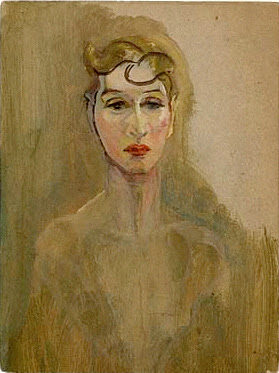 Later in his life, he was an invited speaker and found great success with the dramatic delivery of his poetry. These were a terrific effort for him, but he enjoyed the attention and money that they brought him.
Later in his life, he was an invited speaker and found great success with the dramatic delivery of his poetry. These were a terrific effort for him, but he enjoyed the attention and money that they brought him.
Cummings spent the last ten years of his life traveling, and producing speaking engagements, and living at his summer home, Joy Farm, in Silver Lake, New Hampshire. He died on September 3, 1962, at the age of 67 in North Conway, New Hampshire of a stroke.
His line drawings and aphorisms highlight his resistance to instruction of any kind:
“The Artist is no other than he who unlearns what he has learned, in order to know himself.”
Get to know E E Cummings through the Friends of Madison Library’s Cummings at Silver Lake Celebration Weekend, July 10 & 11, 2015. On Saturday, visit his favorite landscapes and see the view from his beloved Joy Farm. View the Cummings’ Family Collection at the Madison Historical Society and the Mount Washington Valley Arts Association art show and silent auction at the Madison Library. On Friday night at 7 pm enjoy the “nonlecture” of music, art, readings and discussion at the Madison Elementary School. All proceeds from the weekend benefit the Madison Library. Tickets are available through the Madison Library or through the Friends’ website http://www.cummingsatsilverlake.com.
Cynthia Melendy, PhD.
Cynthia lives in the Mount Washington Valley of New Hampshire and has a MA degree in American Studies and a PhD in History.
